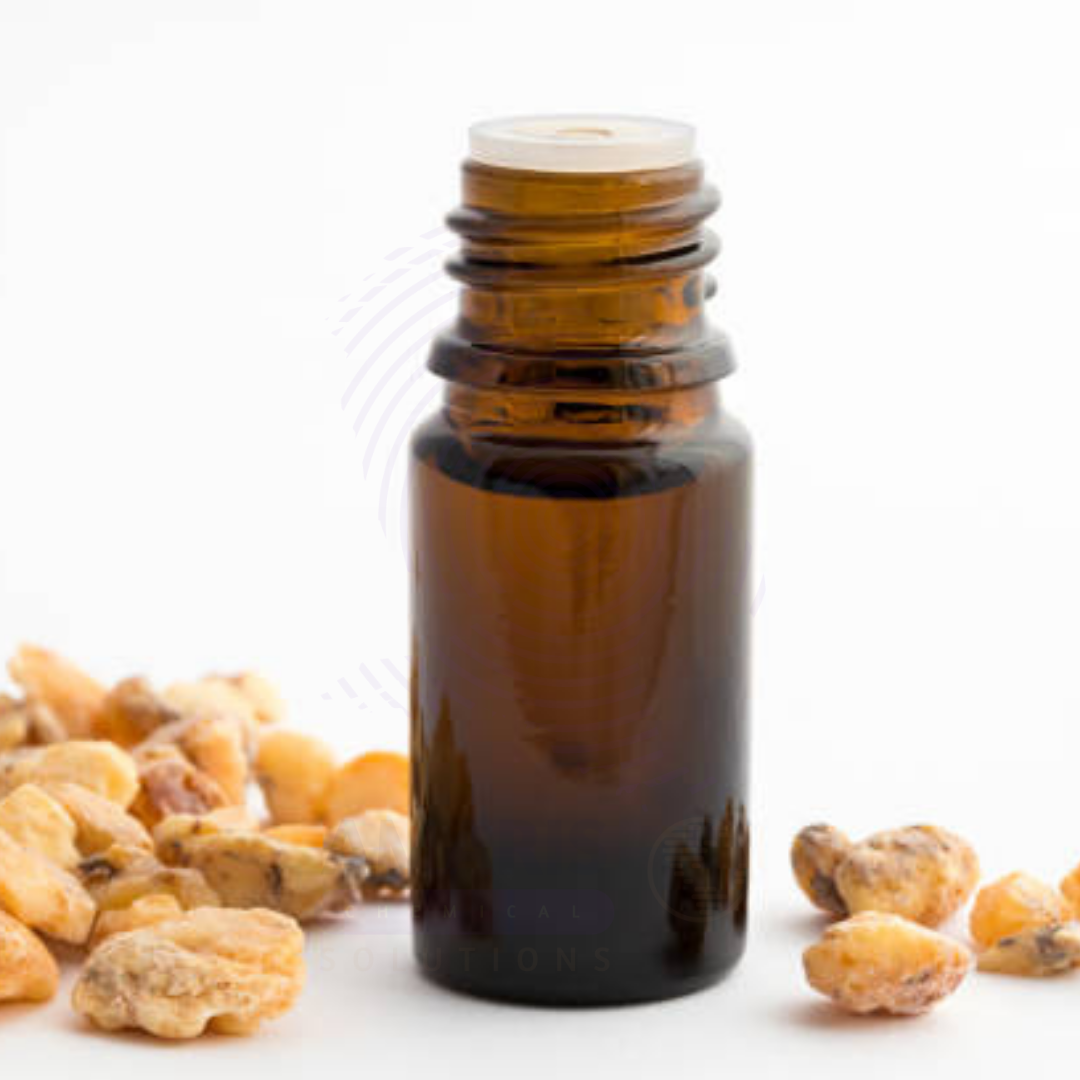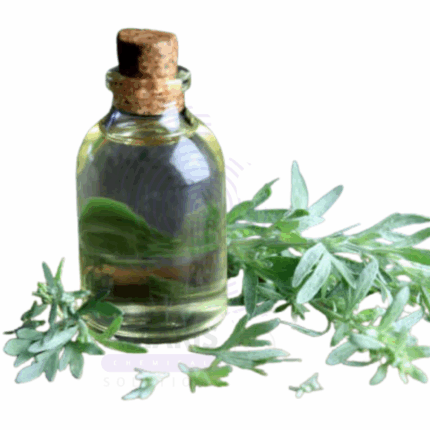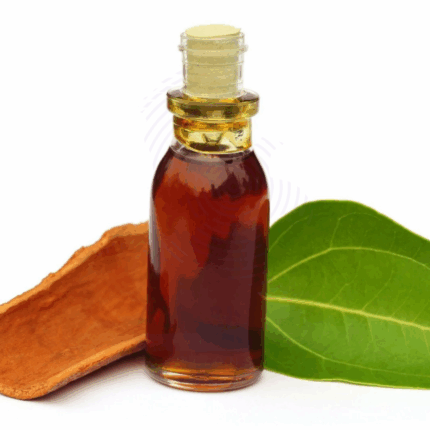Styrax Oil
Whatsapp Order
Styrax Oil, also known as Benzoin Resin Oil, is a natural essential oil derived from the resin of the Styrax benzoin tree, native to Southeast Asia. It is typically extracted through solvent extraction or steam distillation of the hardened resin. Known for its rich, sweet, balsamic aroma with warm vanilla-like undertones, Styrax Oil is prized for its fixative qualities in perfumery and its skin-calming properties in personal care. Rich in benzoic acid, cinnamic acid, and vanillin, it exhibits antimicrobial, anti-inflammatory, and skin-protective activity. Commonly used in emotional wellness products, spiritual blends, and skin repair formulas, it also functions as a key base note in many aromatic compositions.
Description
Table of Contents
Toggle
Styrax Oil
Primary Uses
- Aromatherapy & Wellness
- Diffused to calm the mind, reduce anxiety, and relieve emotional distress.
- Used in meditation and prayer blends for grounding and spiritual focus.
- Incorporated into massage oils for mental relaxation and emotional balance.
- Applied in sleep and nighttime blends to soothe restlessness.
- Blended into stress-relief roll-ons and inhalers to support mental well-being.
- Cosmetics and Personal Care
- Added to creams, balms, and salves for skin healing and barrier protection.
- Included in lip balms and protective ointments for its emollient and antiseptic effects.
- Used in men’s grooming products for a rich, warm base note and calming skin action.
- Blended into soaps, body washes, and deodorants for its sweet scent and antimicrobial benefits.
- Incorporated in perfumes and colognes as a fixative and base note.
- Used in aftershaves and toners to soothe irritation and reduce redness.
- Formulated into hand creams and foot balms for cracked, dry, or sensitive skin.
- Topical Applications
- Diluted in carrier oils and applied to irritated or chapped skin.
- Used in ointments or compresses to help heal cuts, abrasions, and eczema.
- Applied in chest rubs for respiratory support and soothing scent.
- Included in massage blends for localized relief of muscle aches and inflammation.
Secondary Uses
- Cleaning and Detergent Products
- Used in natural room sprays and air fresheners for its warm, sweet, and resinous aroma.
- Added to multi-surface cleaners and polish formulations for a fragrant finish.
- Blended into fabric sprays and drawer sachets for its long-lasting scent.
- Incorporated in laundry products as a fragrance fixative.
- Spa and Therapeutic Products
- Used in bath oils and aromatherapy soaks for stress relief and skin protection.
- Included in massage balms and post-care creams for soothing application.
- Added to sauna infusions for aromatic and meditative benefits.
- Blended into mindfulness rollers and temple balms for emotional grounding.
- Fragrance and Ambient Scenting
- Used as a base note in perfumes, incense, and oriental-style fragrances.
- Incorporated in scented candles and wax melts for cozy, sweet ambiance.
- Blended into room mists, seasonal diffusers, and aromatic sachets.
- Applied in wardrobe and linen sprays for a warm, vanilla-like aroma.
- Pet and Animal Care
- Occasionally used in low-dilution, pet-safe ambient sprays for calming scent (veterinary guidance required).
- Industrial and Specialty Applications
- Used in religious and ceremonial incense formulations.
- Incorporated in traditional varnishes and polishes for its resinous scent.
- Employed in heritage perfumery and museum restoration products requiring authentic historical scent profiles.
KEY PRODUCT FEATURES
1. Basic Identification Attributes
- Botanical Name: Styrax benzoin
- Common/Trade Name: Styrax Oil / Benzoin Resin Oil
- INCI Name: Styrax Benzoin Resin Extract
- CAS Number: 9000-72-0
- HS Code: 3301.29
- Synonyms: Benzoin Oil, Gum Benzoin, Sumatra Benzoin Extract
2. Physical & Chemical Properties
- Physical State: Thick liquid or semi-solid resinous oil
- Color & Odor: Amber to brown; sweet, balsamic, vanilla-like aroma
- Solubility: Insoluble in water; soluble in alcohol and fixed oils
- Refractive Index: 1.570 – 1.590
- Specific Gravity: 1.050 – 1.120
- Main Components: Benzoic acid, cinnamic acid, vanillin, benzyl cinnamate
3. Safety & Hazard Attributes
- GHS Classification: May cause skin sensitivity in high concentrations
- Toxicity: Low when properly diluted; external use only
- Exposure Limits: Refer to Safety Data Sheet (SDS)
- Allergen Information: Contains natural allergens including benzoic acid and vanillin
4. Storage & Handling Attributes
- Storage Conditions: Store in a cool, dry, dark place in airtight containers
- Container Type: Amber glass or aluminum containers with resin-resistant linings
- Shelf Life: 24 to 36 months when stored correctly
- Handling Precautions: Avoid prolonged skin contact; wear gloves in bulk handling
5. Regulatory & Compliance Attributes
- Compliant with IFRA standards for fragrance use
- Produced in GMP-compliant facilities
- Not classified as hazardous for international transport
6. Environmental & Health Impact
- Biodegradability: Biodegradable under typical conditions
- Ecotoxicity: Low aquatic toxicity at normal use levels
- Bioaccumulation: Not expected to bioaccumulate significantly
SAFETY HANDLING PRECAUTIONS
Safety Handling Precautions
- PPE Required: Gloves and protective eyewear for industrial handling
- Handling Guidelines: Use in well-ventilated area; avoid inhaling concentrated vapors
First Aid Measures
- Inhalation: Move to fresh air; seek medical attention if irritation persists
- Skin Contact: Wash with soap and water; discontinue use if reaction develops
- Eye Contact: Flush with water for 15 minutes; consult a physician
- Ingestion: Rinse mouth; do not induce vomiting; get medical help immediately
Firefighting Measures
- Fire Hazards: Combustible resinous oil; keep away from flames
- Extinguishing Media: Foam, CO₂, dry chemical, or water mist
- Special Precautions: Wear self-contained breathing apparatus in fire scenarios
- Hazardous Combustion Products: Carbon dioxide, carbon monoxide, aromatic compounds
Related products
Absinth Oil
Absinth Oil, also known as Wormwood Essential Oil, is a highly aromatic essential oil extracted through steam distillation from the leaves and flowering tops of the Artemisia absinthium plant. Native to Europe and Asia and known historically for its use in absinthe liqueur, this oil features a sharp, bitter, herbaceous aroma with a green and slightly medicinal edge. Rich in thujone, chamazulene, and other bioactive compounds, Absinth Oil is known for its antimicrobial, anti-inflammatory, and digestive-stimulating properties.
While traditionally associated with herbal medicine and ritualistic use, modern applications of Absinth Oil span personal care, pharmaceuticals, and natural pest repellents. Due to its intensity and potential toxicity in high concentrations, it is used in very controlled amounts in fragrance and therapeutic blends. It is valued for its distinctive scent and potent botanical properties, particularly in cosmetics, aromatherapy, and natural cleaning formulations.
Almond Bitter Oil
Almond Bitter Oil, derived from the kernels of bitter almonds (Prunus amygdalus var. amara), is an essential oil known for its sharp, nutty, and marzipan-like aroma. This oil is produced through steam distillation of crushed bitter almond kernels and contains a naturally occurring compound called benzaldehyde, which gives it its characteristic scent. In purified form (free of hydrogen cyanide), bitter almond oil is used in fragrance, flavoring, and pharmaceutical applications.
Due to its potent aroma and biochemical properties, it is widely used in perfumery, baked goods flavoring (in controlled quantities), aromatherapy, and traditional topical remedies. It is important to distinguish between natural bitter almond oil, which must be detoxified, and synthetic benzaldehyde, which is commonly used as a substitute in commercial formulations.
Ambrette Seed Oil
Ambrette Seed Oil is a rare, aromatic essential oil derived from the seeds of the Abelmoschus moschatus plant. Known for its rich, musky, slightly sweet, and floral scent, Ambrette Seed Oil is often considered a botanical alternative to animal-derived musk. It is widely prized in high-end perfumery, natural cosmetic formulations, and aromatherapy for its warm, sensual, and long-lasting aroma.
This oil is rich in ambrettolide and farnesol, compounds that lend it a delicate musky note without the synthetic harshness of artificial musks. Ambrette Seed Oil is non-toxic and safe for topical use when diluted, making it ideal for fine fragrances, massage oils, and therapeutic blends.
Blue Tansy Oil
Blue Tansy Oil is a rare and highly sought-after essential oil obtained via steam distillation of the flowers of Tanacetum annuum, a Moroccan chamomile species. Known for its deep indigo-blue color and distinctive sweet, herbaceous aroma with subtle fruity undertones, this oil is rich in chamazulene — a powerful anti-inflammatory compound that gives it its characteristic blue hue.
Blue Tansy Oil is celebrated in the cosmetic and personal care industry for its calming, soothing, and skin-balancing effects. It is especially beneficial in formulations for sensitive, irritated, or inflamed skin. In aromatherapy, it is valued for promoting relaxation and emotional ease. Its rarity and potency make it a premium choice for high-end skincare, therapeutic blends, and luxury personal care products.
Calendula Oil Infused
Calendula Oil Infused is a golden-yellow carrier oil produced by macerating the dried flower petals of Calendula officinalis (commonly known as pot marigold) in a base oil, typically sunflower, olive, or sweet almond oil. This infusion draws out the calendula flower’s active constituents—including flavonoids, triterpenoids, and carotenoids—resulting in a gentle yet potent botanical oil widely used for its anti-inflammatory, healing, and skin-soothing properties.
Renowned in traditional herbalism and modern natural skincare, Calendula Infused Oil is especially valued for treating sensitive, damaged, or irritated skin. It’s a go-to oil in formulations for baby care, wound healing, and after-sun products. Unlike essential oils, this is not a distilled product and is safe for direct application to the skin.
Camphor White Oil
Camphor White Oil is a steam-distilled essential oil obtained from the wood of the Camphor tree (Cinnamomum camphora), primarily from the white fraction, which is rich in 1,8-cineole, camphor, and linalool. This fraction is the most commonly used in aromatherapy and topical preparations due to its potent but relatively balanced composition compared to brown or yellow fractions. The oil has a sharp, penetrating aroma with a cooling, medicinal character.
Traditionally used in topical pain relief, respiratory care, and soothing balms, Camphor White Oil is known for its anti-inflammatory, decongestant, antiseptic, and stimulating effects. It is widely used in cosmetics, personal care, pharmaceuticals, and aromatherapy formulations.
Cassia Oil
Cassia Oil is a potent essential oil steam-distilled from the bark of Cinnamomum cassia, commonly known as Chinese cinnamon. It carries a strong, spicy, and warm aroma similar to true cinnamon but is more pungent and intense. Its reddish-brown to yellow appearance and high cinnamaldehyde content give it powerful antimicrobial, antifungal, and warming properties. Cassia Oil is used across various industries including food flavoring, pharmaceuticals, cosmetics, aromatherapy, and household products. Due to its strength, it is typically used in diluted concentrations.
Ethylvanillin
Ethylvanillin (3-Ethoxy-4-hydroxybenzaldehyde) is a synthetic aromatic aldehyde widely used as a flavoring agent and fragrance ingredient. It is a white to pale yellow crystalline powder with a strong, sweet vanilla-like odor, but more intense than natural vanillin. Ethylvanillin offers excellent flavor stability, solubility in alcohol and oils, and is valued for its enhanced vanilla aroma in food, beverage, cosmetics, and pharmaceutical formulations. Due to its potent scent and flavor profile, it is a preferred substitute or complement to natural vanilla extract.


 Preservatives(food)
Preservatives(food) Flavor Enhancers
Flavor Enhancers Acidulants
Acidulants Sweeteners
Sweeteners Antioxidants
Antioxidants Colorants(food)
Colorants(food) Nutraceutical Ingredients (food)
Nutraceutical Ingredients (food) Nutrient Supplements
Nutrient Supplements Emulsifiers
Emulsifiers
 Collectors
Collectors Dust Suppressants
Dust Suppressants Explosives and Blasting Agents
Explosives and Blasting Agents Flocculants and Coagulants
Flocculants and Coagulants Frothers
Frothers Leaching Agents
Leaching Agents pH Modifiers
pH Modifiers Precious Metal Extraction Agents
Precious Metal Extraction Agents
 Antioxidants(plastic)
Antioxidants(plastic) Colorants (Pigments, Dyes)
Colorants (Pigments, Dyes) Fillers and Reinforcements
Fillers and Reinforcements Flame Retardants
Flame Retardants Monomers
Monomers Plasticizers
Plasticizers Polymerization Initiators
Polymerization Initiators Stabilizers (UV, Heat)
Stabilizers (UV, Heat)
 Antifoaming Agents
Antifoaming Agents Chelating Agents
Chelating Agents Coagulants and Flocculants
Coagulants and Flocculants Corrosion Inhibitors
Corrosion Inhibitors Disinfectants and Biocides
Disinfectants and Biocides Oxidizing Agents
Oxidizing Agents pH Adjusters
pH Adjusters Scale Inhibitors( water)
Scale Inhibitors( water)
 Antioxidants(cosmetic)
Antioxidants(cosmetic) Emollients
Emollients Fragrances and Essential Oils
Fragrances and Essential Oils Humectants
Humectants Preservatives
Preservatives Surfactants(cosmetic)
Surfactants(cosmetic) Thickeners
Thickeners UV Filters
UV Filters
 Fertilizers
Fertilizers Soil Conditioners
Soil Conditioners Plant Growth Regulators
Plant Growth Regulators Animal Feed Additives
Animal Feed Additives Biostimulants
Biostimulants Pesticides (Herbicides, Insecticides, Fungicides)
Pesticides (Herbicides, Insecticides, Fungicides)
 Active Pharmaceutical Ingredients (APIs)
Active Pharmaceutical Ingredients (APIs) Excipients
Excipients Solvents(pharmaceutical)
Solvents(pharmaceutical) Antibiotics
Antibiotics Antiseptics and Disinfectants
Antiseptics and Disinfectants Vaccine Adjuvants
Vaccine Adjuvants Nutraceutical Ingredients (pharmaceutical)
Nutraceutical Ingredients (pharmaceutical) Analgesics & Antipyretics
Analgesics & Antipyretics
 Analytical Reagents
Analytical Reagents Solvents(lab)
Solvents(lab) Chromatography Chemicals
Chromatography Chemicals Spectroscopy Reagents
Spectroscopy Reagents microbiology-and-cell-culture-reagents
microbiology-and-cell-culture-reagents Molecular Biology Reagents
Molecular Biology Reagents Biochemical Reagents
Biochemical Reagents Inorganic and Organic Standards
Inorganic and Organic Standards Laboratory Safety Chemicals
Laboratory Safety Chemicals Specialty Laboratory Chemicals(Special Laboratory Equipment)
Specialty Laboratory Chemicals(Special Laboratory Equipment)
 Demulsifiers
Demulsifiers Hydraulic Fracturing Fluids
Hydraulic Fracturing Fluids Scale Inhibitors(oil)
Scale Inhibitors(oil) Surfactants(oil)
Surfactants(oil) Drilling Fluids
Drilling Fluids
 Dyes and Pigments
Dyes and Pigments Bleaching Agents
Bleaching Agents Softening Agents
Softening Agents Finishing Agents
Finishing Agents Antistatic Agents
Antistatic Agents
 Admixtures
Admixtures Waterproofing Agents
Waterproofing Agents Sealants and Adhesives
Sealants and Adhesives Curing Compounds
Curing Compounds Concrete Repair Chemicals
Concrete Repair Chemicals Anti-Corrosion Coatings
Anti-Corrosion Coatings
 Surfactants(cleaning)
Surfactants(cleaning) Builders
Builders Enzymes
Enzymes Solvents (Cleaning)
Solvents (Cleaning) Fragrances
Fragrances
 Electronic Chemicals
Electronic Chemicals Catalysts
Catalysts Lubricants
Lubricants Photographic Chemicals
Photographic Chemicals Refrigerants
Refrigerants Automotive chemicals
Automotive chemicals Pyrotechnic Chemicals
Pyrotechnic Chemicals
 Biodegradable Surfactants
Biodegradable Surfactants Bio-based Solvents
Bio-based Solvents Renewable Polymers
Renewable Polymers Carbon Capture Chemicals
Carbon Capture Chemicals Wastewater Treatment Chemicals
Wastewater Treatment Chemicals
 Pigments
Pigments Solvents(paint)
Solvents(paint) Specialty Coatings
Specialty Coatings Binders/Resins
Binders/Resins Additives
Additives Driers
Driers Anti-Corrosion Agents
Anti-Corrosion Agents Functional Coatings
Functional Coatings Application-Specific Coatings
Application-Specific Coatings
 Fresh Herbs
Fresh Herbs Ground Spices
Ground Spices Whole Spices
Whole Spices Spice Blends
Spice Blends Dried Herbs
Dried Herbs
 Leavening Agents
Leavening Agents Dough Conditioners
Dough Conditioners Flour Treatments
Flour Treatments Fat Replacers
Fat Replacers Decoratives
Decoratives Preservatives(baking)
Preservatives(baking)
 Plasticizers & Softeners
Plasticizers & Softeners Reinforcing Agents
Reinforcing Agents Adhesion Promoters
Adhesion Promoters Vulcanizing Agents
Vulcanizing Agents Antidegradants
Antidegradants Blowing Agents
Blowing Agents Fillers & Extenders
Fillers & Extenders Accelerators & Retarders
Accelerators & Retarders




























